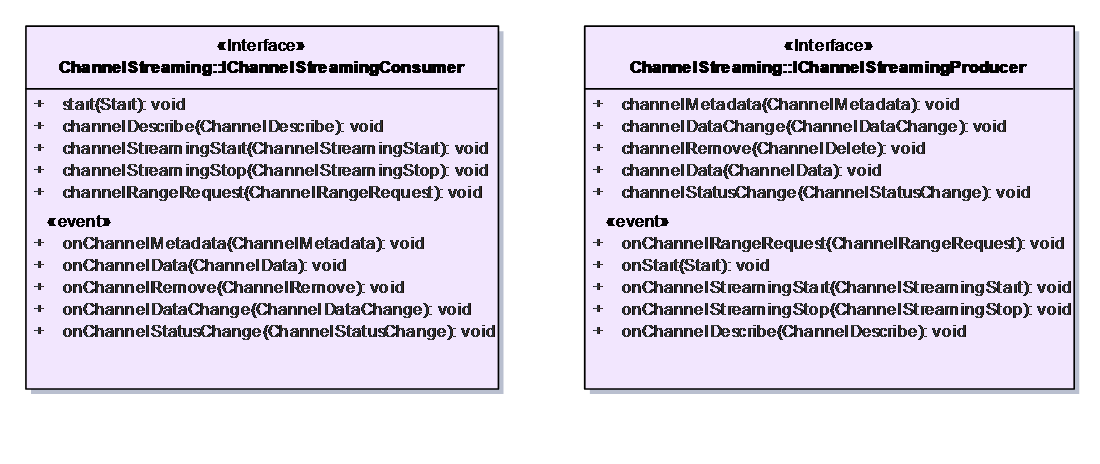2 Protocols
| Topic Version | 1 | Published | 10/31/2016 | |
| For Standard | ETP v1.1 | |||
This section is normative. It represents the published ETP specification and is generated directly from the UML model. This section provides a dynamic view of each ETP protocol using standard UML conventions. For each protocol, the following information is given:
- An overview of the protocol
- Its requirements (or general behavior)
- Sequence diagrams to model the normal flow of messages. Assume that each message also carries a message header.
- Interfaces for agents in the interaction (e.g., clients and servers, consumers and producers, etc.). Generally, each protocol has 2 interfaces, one for each role. In the future, this number of interfaces is not guaranteed, because some protocols may be purely peer-to-peer, with identical roles for all agents.
- The arguments to each interface method are always called "eventData" and are typed according to the message names in the Schemas section of this document.
- Interface methods that send messages are not stereotyped; methods that receive or handle incoming messages are stereotyped as <> methods. In some cases (such as 3.4.1.3 Message: CloseSession), either party may send or receive the message, and this is reflected by having both call and event methods.
- In some cases, there are protocol state diagrams to model the possible states of each role in a subprotocol.

This diagram shows how the opposite roles of a protocol implement similar but opposite interfaces. The calls for one become the events for the other.